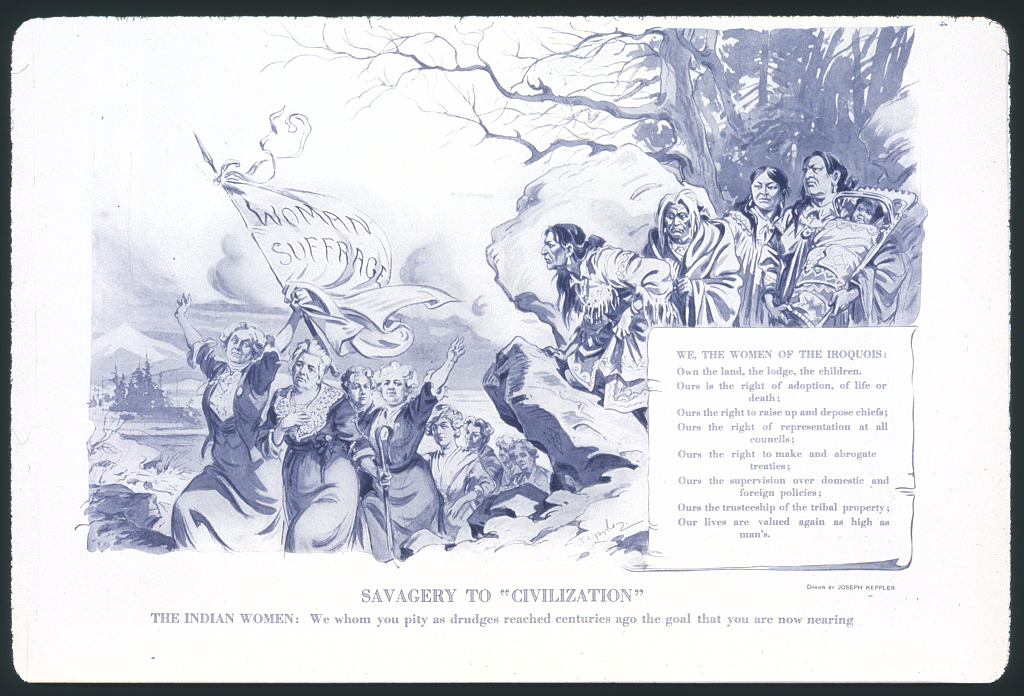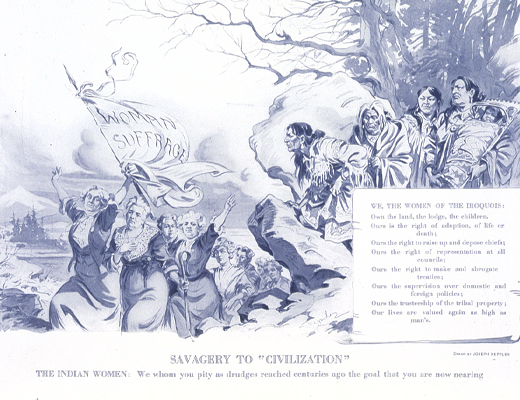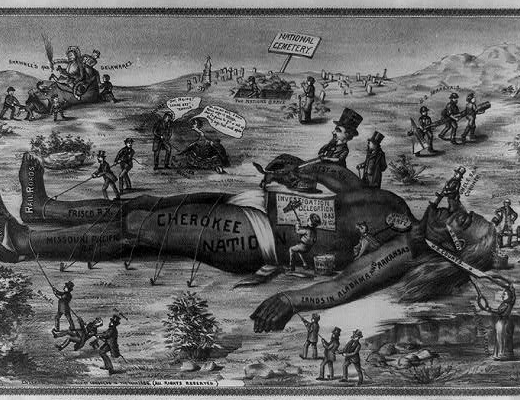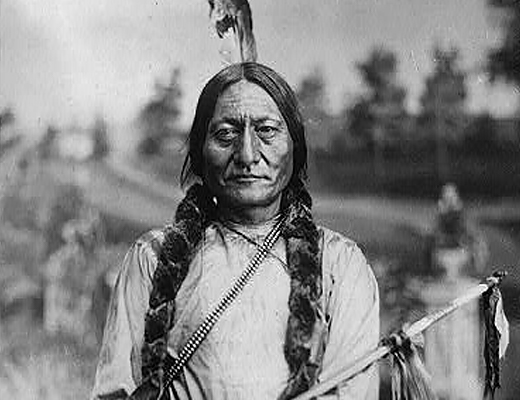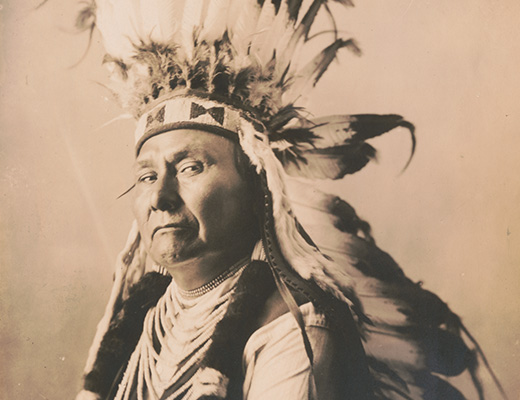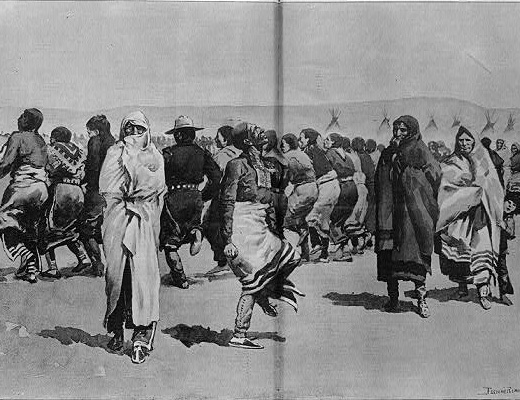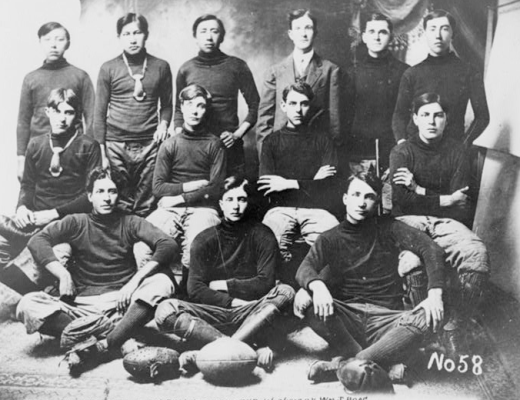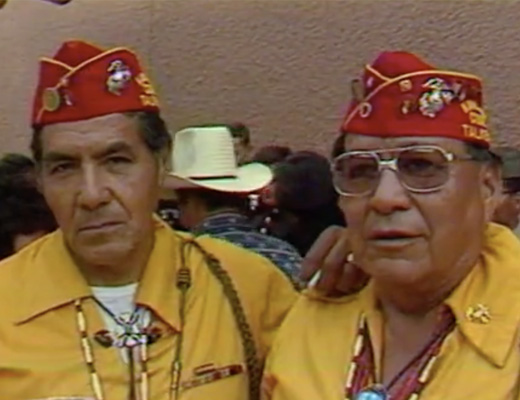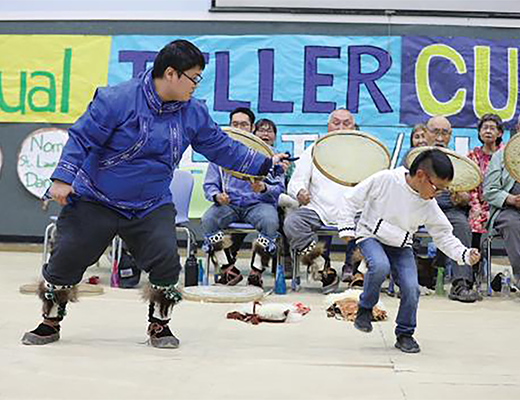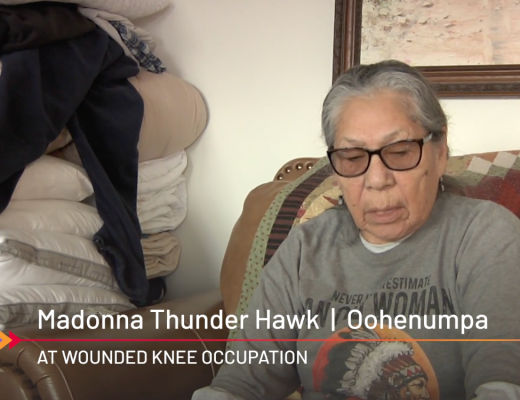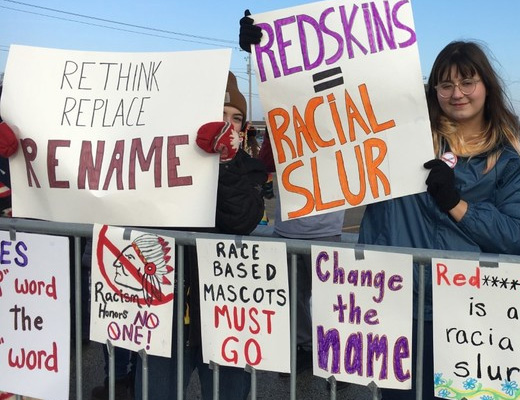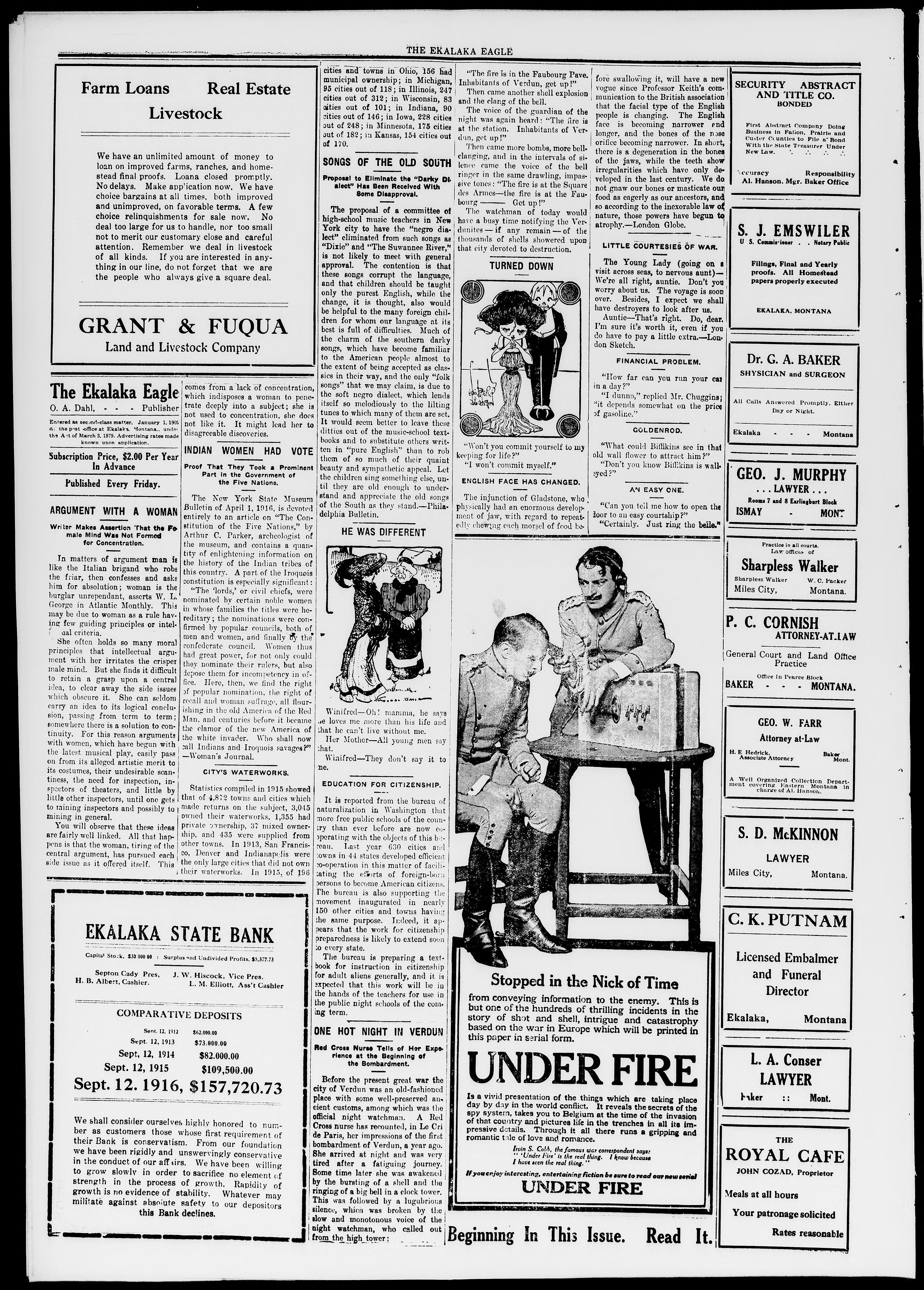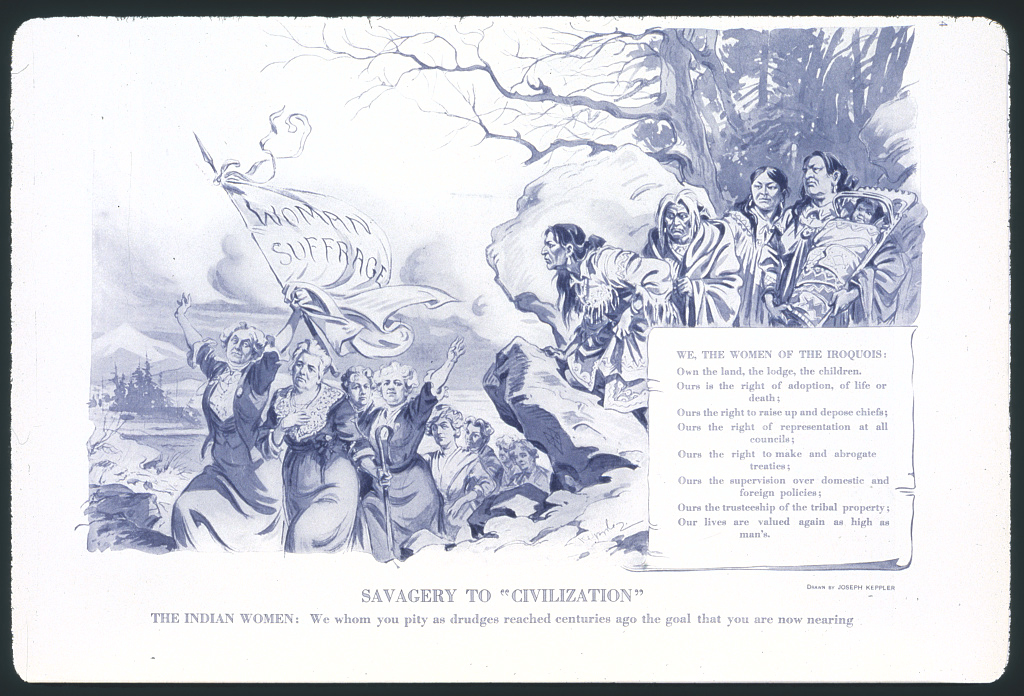The Haudenosaunee (Iroquois) Constitution, known as the Great Law of Peace, dates back to before Europeans arrived in the Americas. It tells the story of the formation of the Haudenosaunee Confederacy, a set of laws governing six nations, including how women and men share in the governing and in some cases, women alone have the power to veto.
One of Journalism in Action’s advisors, Dr. Joseph Bruchac, Abenaki, and author of the 2021 novel, A Peacemaker for Warring Nations: The Founding of the Iroquois League, emphasized the significance that in the Haudenosaunee creation story, “it is a woman who first brings human life to this earth.”
Bruchac went on to explain the central place of women in virtually all of the original indigenous nations, a fact that has been “largely overlooked or misunderstood by the larger culture.” Bruchac has written more than 120 stories on American Indian culture.
Directions:
Read the paragraph entitled “Indian Women Had Vote.” Then using the magnifier tool to help you, answer the questions below.
“Indian Women had Vote,” November 10, 1916, The Ekala Eagle. Library of Congress
Questions
Annotate this Image
The Great Law of Peace, initially passed down as an oral tradition until it was written down, not only inspired other tribes to create democratic systems of government directed and informed by a constitution, but it also influenced the founding fathers of the current United States.
Directions: Read the four paragraphs from “Indians Had Democracy for Centuries,” published in The Sun in 1918, using the magnifier to help you. Then use the annotator tool to take notes on the following questions:
- What does this article make you think? What does it make you wonder?
- Explain what the terms “Red Man” and “white invader” mean. Why is the term “Red Man” no longer used?
- Explain the meaning of the question in the last sentence of the article: “Who shall now call Indians and Iroquois savages?” Include the tone of the question and any literary devices that are used.
- Take a peek at the article to the left of this one entitled “Argument With a Woman.” Why do you think the editor of the The Ekalaka Eagle might have chosen to place these two articles next to one another?
Source:“Indians had Democracy for Centuries.” Feb. 17, 1918, The Sun. Library of Congress
Use the toggle button above to switch to Magnify Mode. Magnify mode will help you see finer detail in the image.
Switch back to Annotate Mode to create your annotations with click and drag.

Your Annotations
Puzzler
Directions: Take a look at the different sections of the illustration one by one and answer the question that accompanies each section. At the end, you will see the completed image.
Note: We wanted to share that one of Journalism in Action’s advisors, Dr. Joseph Bruchac, Abenaki, and author of the 2021 novel, A Peacemaker for Warring Nations: The Founding of the Iroquois League, stressed the significance that in the Haudenosaunee creation story, “it is a woman who first brings human life to this earth.”
Bruchac went on to explain the central place of women in virtually all of the original indigenous nations, a fact that has been “largely overlooked or misunderstood by the larger culture.” Bruchac has written more than 120 stories on American Indian culture.
Source: Library of Congress
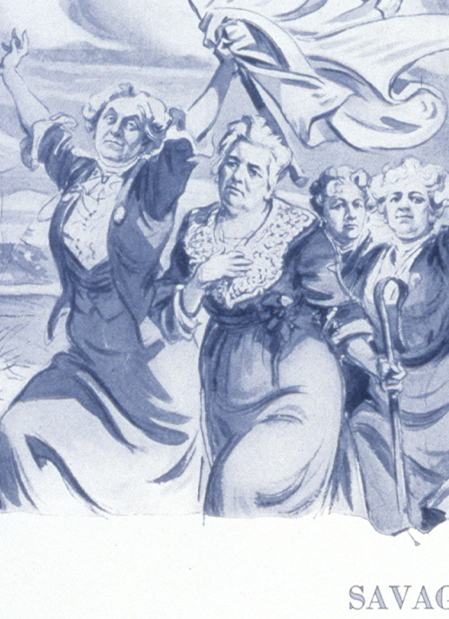
Cropped Image 1
(Lower left) Who do you think these women are?
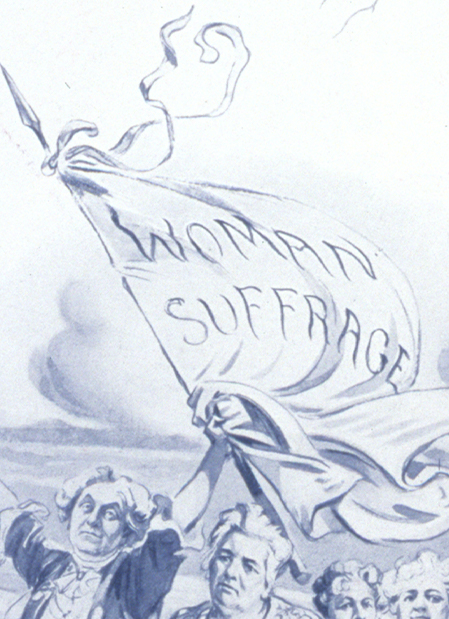
Cropped Image 2
(Upper left) What cause is being represented here?
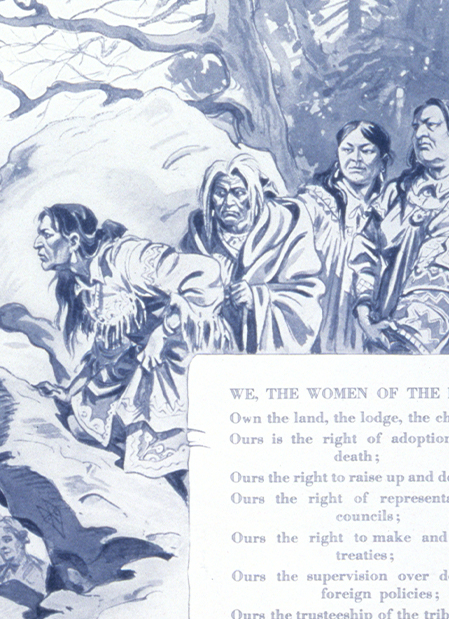
Cropped Image 3
(Upper right) Who do you think these women are?
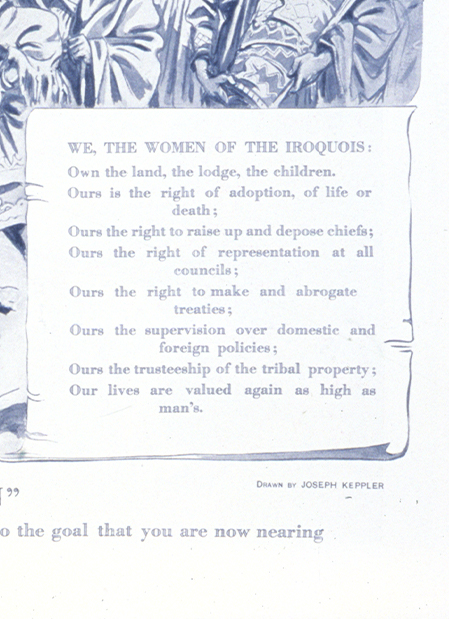
Cropped Image 4
(Lower right) How many rights of Iroquois women are listed? Choose 2 rights and explain what each one means.
